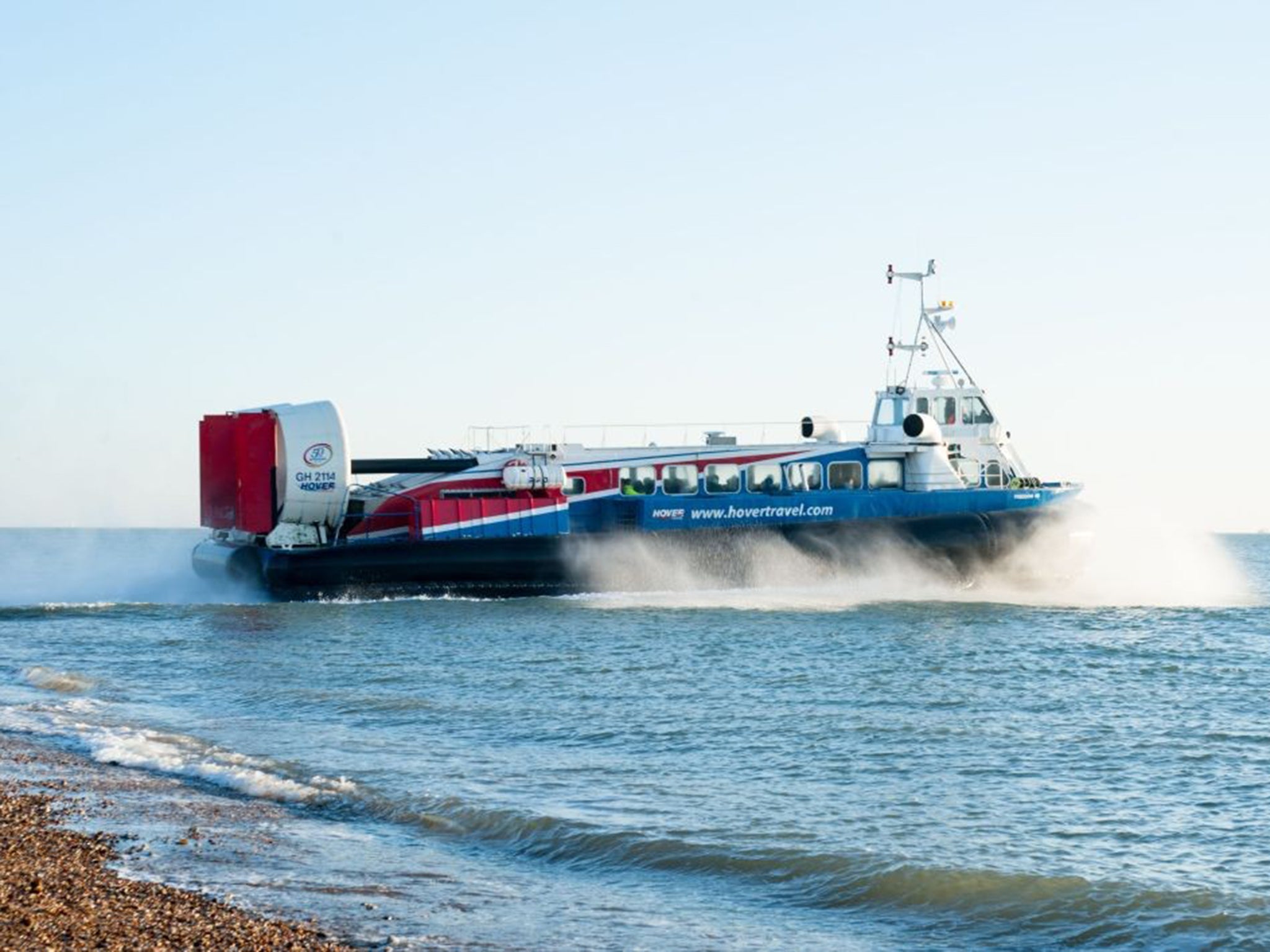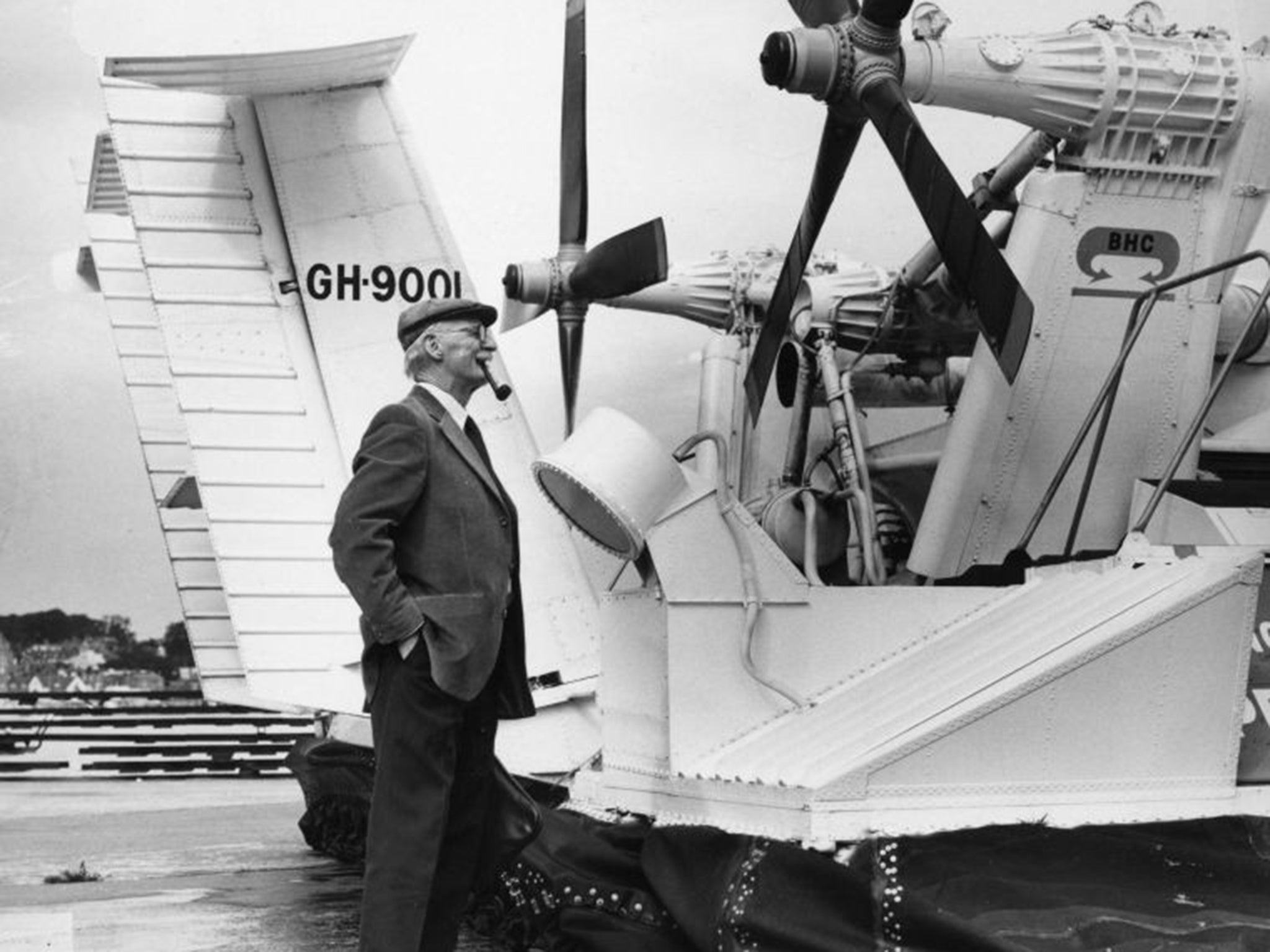Cross-Channel hovercraft's 50th birthday: 'This technology has been quietly advancing over the decades'
The former cross-Channel hovercraft may be facing the scrapheap, but there's still a future for these go-anywhere workhorses

When it was reported last month that the last two Dover to Boulogne hovercraft were set to be scrapped, it was hard to imagine that the Princess Margaret and Princess Anne Hoverspeed vessels had once been the most glamorous and futuristic way to zip across the Channel. And yet, half a century after the hovercraft's moment in the sun in the mid 1960s and 16 years since the Princesses Margaret and Anne were decommissioned in favour of the Channel Tunnel, there are signs that the hovercraft's rule of the waves is far from over.
The idea of a vehicle travelling on an air cushion has been floating around for a century or more. But it was during the glossy period of British technological and engineering achievement in the post-war years that Christopher Cockerell, the father of the hovercraft, nailed it all down after some Heath Robinson-style experiments with empty coffee tins in his back garden. By filling a skirt with air and bolting the kind of engines you'd see on a helicopter on the back, Cockerell worked out how to make his invention both hover and glide forward.
His SRN1 debuted in 1959 and crossed the Channel the same year. And the Channel was where many travellers had their first experience of feeling seasick because of the speed the thing travels at over rough waters; or perhaps inadvertently throwing their G&T over their Biba dress or Burton suit on the car-carrying hovercraft route that would run variously from Dover and Ramsgate to Boulogne and Calais from 1966 until 2000.

But it's the Solent that is ground zero for hovercraft. The oldest route of all is from Southsea to Ryde on the Isle of Wight, which Hovertravel started 51 years ago. "As well as the obvious appeal of our unique craft, which attracts visitors from around the globe, Hovertravel has an excellent reputation for being friendly and frequent as well as fast," says the firm's managing director Neil Chapman. The company is embarking on a new era this April, replacing its ageing fleet with two spanking new hovercraft built on the banks of the River Itchen in Southampton by sister company Griffon Hoverwork. "Ordering two new craft allows us to benefit from the obvious advances in technology since our current craft were built."
At Lee-on-the-Solent, there's the world's only museum dedicated to all things hovercraft-related on the site of HMS Daedalus, the former naval airfield where the machines were first tested in the 1950s. Trustee Warwick Jacobs tells me everything I'd always wanted to know about hovercraft. "It's almost like a phoenix rising today. The 1970s fuel crisis made hovercraft uneconomic because they used so much fuel. These modern lightweight diesels, like the ones Griffon are building, are fourth generation – it's all fly-by-wire technology. The cabins used to be like something from a flying boat."
He takes me up inside one then we look round the former hangar chock-full with trinkets and historic hovercraft, including the vessel on which Pierce Brosnan injured his leg making Die Another Day, his last Bond film. Jacobs, a hovercraft addict who knows everything about these machines, reckons they're the future because the new ones being built in Southampton have "got massive ducts and propellers but they run at half the speed of the old propellers, so they're half as noisy. It's also more like maintaining a bus than a jet engine today. Plus they build them from composite materials, which is tougher than the aluminium they used to use." Even electric-powered hovercraft are emerging. "This technology has been quietly advancing over the decades."
Not that you would ever realise it in Britain. We developed and built them, but – aside from the Solent and the Channel – they never featured largely in our consciousness. Except for, perhaps, the head-scratching sport of hovercraft racing. Anyone who's old enough to remember Edd the Duck might also recall seeing these mini-versions being ragged around muddy Midlands fields on television. It's the 50th anniversary of the Hovercraft Club of Great Britain this year and they'll be racing one-person machines during the world championships at Tamworth in Warwickshire in July.
And though we may not see hovercraft everyday, millions of people around the world do. "India has a massive fleet, so does Columbia and Russia," says Jacobs. "You can get on a scheduled hovercraft service in Japan, the Eastern bloc countries, on the Volga, the Red Sea, Venice, Zanzibar. A hovercraft is perfect where there's no infrastructure in developing countries." Britain never caught the bug, Jacobs believes, because we built bridges and tunnels to master the Channel, the Severn, the Thames, the Humber – places where hovercraft could have worked.
The military of many countries are rather fond of them, too – Russia has enormous ones for its marines, Iran and Saudi Arabia deploy them widely, so does the US. There are 200 military hovercraft in North Korea alone. Yet the Royal Navy never fell either hook, line or sinker for them. "Saddam Hussein had six in the first Gulf War," says Jacobs. Guess where they were built? Yep. After that embarrassment the Royal Marines placed a token order for four, which were replaced with a new variant last year.
After so long as a quirky, Cinderella-esque form of transport that's seen as being a bit past it, perhaps we're rediscovering our love of these machines that were forged in the same era as the VC10 long-range airliner and the Jaguar E-Type. They emerged during "that white heat era of technology," says Jacobs. "Concorde was with France, our space programme was with America, the hovercraft was ours."
Indeed, thousands have petitioned to save the last remaining SRN4 hovercraft which face being scrapped as the land they sit on next to the museum is earmarked for new housing. "They're still under threat – one will inevitably go," says Jacobs. "But we've been amazed by the public support. The land agents recognise the national significance of these machines and hopefully we will be able to keep one." As he's telling me this, Jacobs spots something out on the Solent. It's the new hovercraft being built by Griffon for the Isle of Wight route. Jacobs calls the other museum volunteers over and we watch the new craft kick out towards Ryde.
We're all cheered by the site of this new chapter in a story which seemed over. And who could have foreseen that happening? Jacobs reflects wistfully: "Christopher Cockerell, before he died, said: 'there'll always be hovercraft – you can't uninvent something'."
Join our commenting forum
Join thought-provoking conversations, follow other Independent readers and see their replies
Comments